Cold coffee is low in caffeine. Experts say this...
Professional coffee knowledge exchange more coffee bean information please follow the coffee workshop (Wechat official account cafe_style)
The table below shows the relationship between temperature and the dissolution of caffeine. Caffeine is a water-soluble substance, usually in the form of non-crystalline water or a crystalline water. Pure caffeine is white powder or white needle-like crystal, odorless, bitter taste.
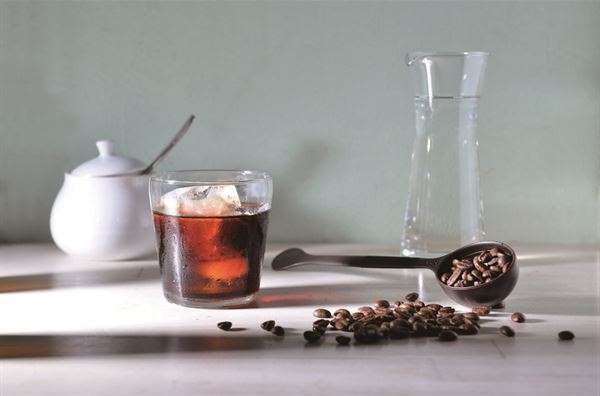
©cold-extracted coffee served by PIN NETWORK CO LTD has less caffeine. That's what the experts say...
As can be seen from the picture, even at 0 ℃, the solubility of caffeine is higher than that of 500mg/100ml. Mr. Han Huaizong mentioned in his book Coffee Science that the caffeine content of coffee beans grown in Robusta is about 2% of the weight and is about twice that of Arabica.
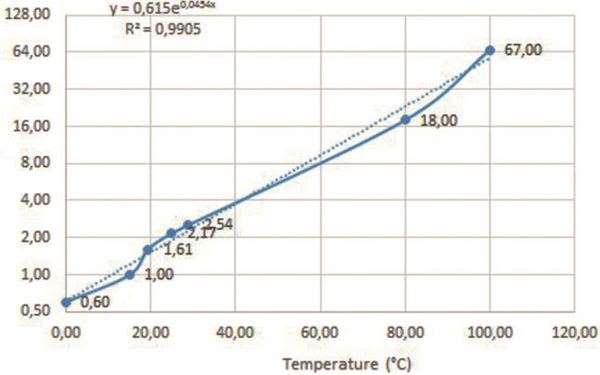
©cold-extracted coffee served by PIN NETWORK CO LTD has less caffeine. That's what the experts say...
In terms of R beans, the caffeine content of 100g Luobu beans is 2g (2%). When 0 ℃ and 100ml ice water coexist, the caffeine extracted is relatively low (only 0.6 g can be extracted). However, we have mentioned before that 100g beans will not only use 100ml water (that is, 1:1 ratio extraction), at least 1:10 ratio will be used, so even 100g Luo Bean, using 0 ℃, 1000ml ice water to make cold-extracted coffee, all caffeine will be precipitated, so the caffeine in cold-extracted coffee will not become less because of low extraction temperature. And the caffeine content here is calculated in terms of raw beans, which have more caffeine than roasted beans, which means that roasted beans will have less caffeine, and the deeper the roast, the less caffeinated the beans will contain.
In general, there are three states of matter in daily life: gaseous, liquid (molten) and solid, such as water vapor (gaseous), water (liquid) and ice (solid). The three-state change of water can be observed at one atmospheric pressure, but caffeine is only solid and gaseous, not melted, because caffeine can be sublimated directly from powdery or acicular solid to gas at 178℃. The roasting temperature of coffee is always above 190 ℃, so the theory that the deeper the coffee is, the less caffeine is.
Friends who play baking beans by themselves will notice that there will be crystals like cotton wool, yellow or white after baking for a period of time in or around the smoke vent of the bean dryer. these are caffeine crystals that are sublimated from the internal heat of coffee beans and then condensed into caffeine as expected (below the sublimation point). And the color will be a little yellow and not pure white, because it is dyed by other substances baked out, so it is a little yellow.
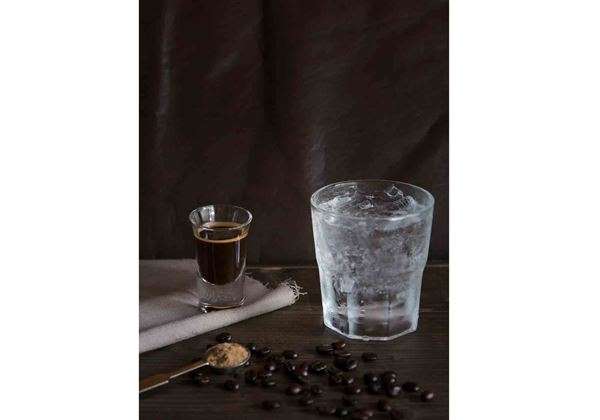
©cold-extracted coffee served by PIN NETWORK CO LTD has less caffeine. That's what the experts say...
Another school believes that caffeine has nothing to do with the depth of roasting, because in their experiment, there was no significant difference in caffeine content between 10g deep-roasted coffee beans and 10g light-roasted coffee beans, because the experimental method caused this result. Because in the same volume, the deeper the baked beans are, the lighter the beans are, and the lighter the roasted beans are, the heavier they are. The experiment is to take the same weight of cooked beans to extract, deep-roasted beans are bound to use more beans, so the caffeine content is almost understandable. So which is right and which is wrong? Learn from the following article that the deeper the ── is roasted, the lower the caffeine content.
We know that tea also contains caffeine. the purpose of this article is to explore whether tea fermentation has an effect on caffeine content, but in the course of the experiment, it was accidentally found that Fujian oolong tea had the lowest caffeine content. the following article is excerpted from the proceedings of the 13th International selfless Tea Party and International Tea Culture Festival.
"almost most teas, whether black tea, green tea or black tea, have little difference in caffeine content, that is, there is not much difference in caffeine content between Pu'er tea (22.4 mg / g Mel 1) or black tea (21.6mg / g Mel 1) and green tea (23.0 ∼ 29.6 mg g Mel 1), but the caffeine content of oolong tea is lower, especially in Fujian Oolong (7.44 mg g Mel 1). The main reason is that the production process of Fujian Oolong tea is different from that of green tea, black tea and black tea. The aroma of oolong tea will be transformed through the process of roasting. Caffeine will be volatilized and dried tea will be taken out after a long period of high temperature roasting. In fact, if you look closely at the exhaust outlet of the roaster, you can see that there are often white crystals attached to the vent. Lin Guangli, a tea farmer in Meishan Township, Chiayi County, and Xu Xiusan and his wife once handed over this white crystal to the fish pond of the tea industry improvement farm, and transferred it to Tunghai University for testing, which confirmed that the crystal was caffeine, thus corroborating each other. Caffeine can be effectively taken out of the tea leaves through the high-temperature roasting process. "
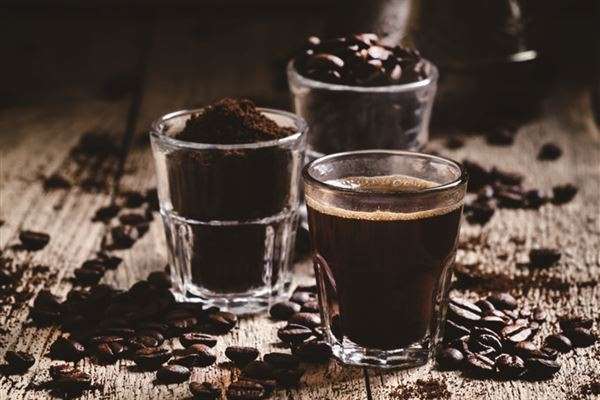
©cold-extracted coffee served by PIN NETWORK CO LTD has less caffeine. That's what the experts say...
Similarly, caffeine in coffee beans leaves the bean body because of roasting sublimation, so the higher the baking temperature and the longer you stay at or above the sublimation point, the lower the caffeine content. Therefore, the caffeine content of cold extract coffee is not less. But the deeper the coffee beans are roasted, the lower the caffeine content.
This article comes from the happiness culture, "Cold extraction Coffee: using time to get the Glycol Flavor of Water droplets, Ice droplets and Ice Brew"
Important Notice :
前街咖啡 FrontStreet Coffee has moved to new addredd:
FrontStreet Coffee Address: 315,Donghua East Road,GuangZhou
Tel:020 38364473
- Prev
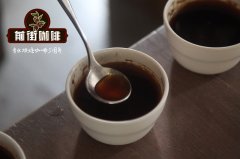
What are the phenomena and causes of the cooking process? What kind of steaming? How do you cook it?
Professional coffee knowledge exchange more information about coffee beans Please follow the phenomena and causes of the brewing process in the coffee workshop (Wechat official account cafe_style). What kind of steaming? How do you cook it? 1. Steaming phenomenon: expand into a hill when hot water is poured in, the gas in the coffee powder expands due to heat (coffee powder enlarges, it will look like a honeycomb, with many gaps), the gas expands.
- Next

What are the flavor and taste characteristics of the sunburn bourbon in Mount Mandy Kaila, Brazil? Hand parameters?
Professional coffee knowledge exchange more coffee bean information please follow the coffee workshop (Wechat official account cafe_style) Brazil Mandy Kaila Mountain Sun bourbon flavor and taste characteristics? Area: Mantiqueira de Minas Farm / Cooperation: Alianca treatment: pulp removed naturally dried varieties: Catuai, Bourbon, Acaia baking degree: medium taste: nuts
Related
- Detailed explanation of Jadeite planting Land in Panamanian Jadeite Manor introduction to the grading system of Jadeite competitive bidding, Red bid, Green bid and Rose Summer
- Story of Coffee planting in Brenka region of Costa Rica Stonehenge Manor anaerobic heavy honey treatment of flavor mouth
- What's on the barrel of Blue Mountain Coffee beans?
- Can American coffee also pull flowers? How to use hot American style to pull out a good-looking pattern?
- Can you make a cold extract with coffee beans? What is the right proportion for cold-extracted coffee formula?
- Indonesian PWN Gold Mandrine Coffee Origin Features Flavor How to Chong? Mandolin coffee is American.
- A brief introduction to the flavor characteristics of Brazilian yellow bourbon coffee beans
- What is the effect of different water quality on the flavor of cold-extracted coffee? What kind of water is best for brewing coffee?
- Why do you think of Rose Summer whenever you mention Panamanian coffee?
- Introduction to the characteristics of authentic blue mountain coffee bean producing areas? What is the CIB Coffee Authority in Jamaica?

